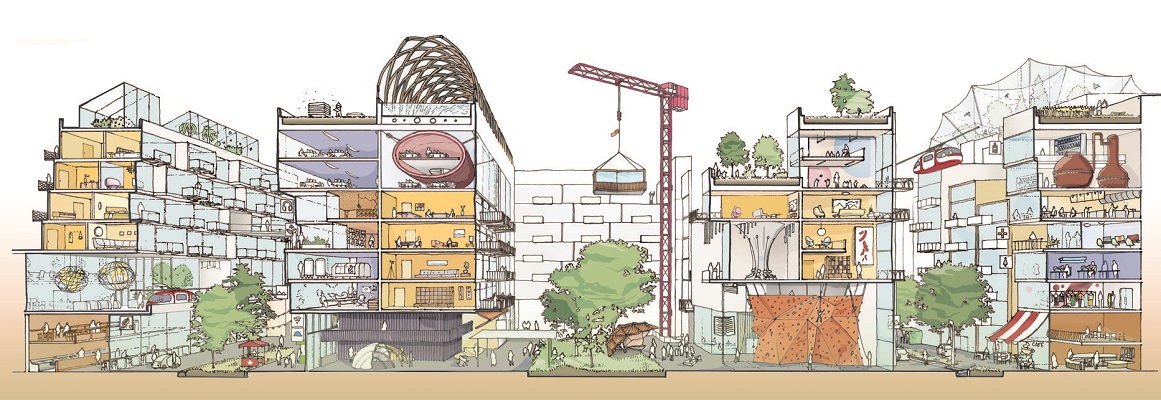Cities Experiment with “Climate Positive” Design
Advocates say we could design city buildings and neighborhoods that cancel out more carbon than they emit, with the right policies and mindset. Cities are crucial to fighting climate change. They occupy only two percent of global land area but have an enormous climate impact, consuming more than two-thirds of global energy and accounting for 70 percent of carbon emissions.
Read the entire article at CitiLab.
Just keeping this in check will require unprecedented actions. “To keep the Earth somewhat hospitable for humans, we have to make changes that most people would find unreasonable,” said Eric Corey Freed, an architect and sustainability specialist who works with cities around the world to curb their carbon emissions. “Cutting carbon in half is pretty straightforward,” said Freed. “What I have to do to get to the last 50 percent is harder.”
Some of Freed’s recommendations to clients in city governments: Ban the use of internal combustion engines within city limits, buy solar panels for every rooftop, take over your electric utility, buy every citizen an electric scooter. And that’s just to reach carbon neutrality. The stage beyond that entails removing carbon from the atmosphere.
Can cities revamp their neighborhoods so they cancel out more carbon than they emit? Some designers and advocates are pushing for what they call climate-positive city design, which aims to go beyond zero emissions.
“We know that reducing emissions alone won’t get us there,” said Pamela Conrad, a landscape architect with San Francisco’s CMG Partners who focuses on carbon drawdown strategies. After she developed a carbon calculator to measure a project’s climate impact, Conrad said it became clearer how much landscape design could do to offset and reduce emissions. For example, trees, soil and other materials store (or sequester) carbon, and can offset a significant amount of what building materials emit during their life cycle.
Designing beyond net-zero impact is certainly possible. The International Living Future Institute can point to more than 60 building projects that generate more energy than they use. Ranging from an education center in Austin, Texas, to a farmhouse in Ann Arbor, Michigan, the projects have met the “Energy Petal” threshold within its Living Building certification. This indicates that each generated at least 105 percent of its energy needs in its first 12 months of operations. A handful of buildings generated 200 percent of their energy or more.
Making a neighborhood or campus climate-positive is less of a challenge in terms of technology than in policy, bureaucracy, and mindset. For the central SOMA neighborhood of San Francisco, the city has approved a redevelopment plan that calls for recycling storm water runoff by channeling it to an underground tank and then using it for street cleaning. In Boulder, Colorado, Andrew Bush, a developer who specializes in highly sustainable buildings, says he can already build residential water systems that pull the heat from wastewater lines and transfer that energy to the drinking and showering water that tenants use. He’s now looking to tap into the heat generated from city sewer lines — but getting approval for that is complicated and takes time.



